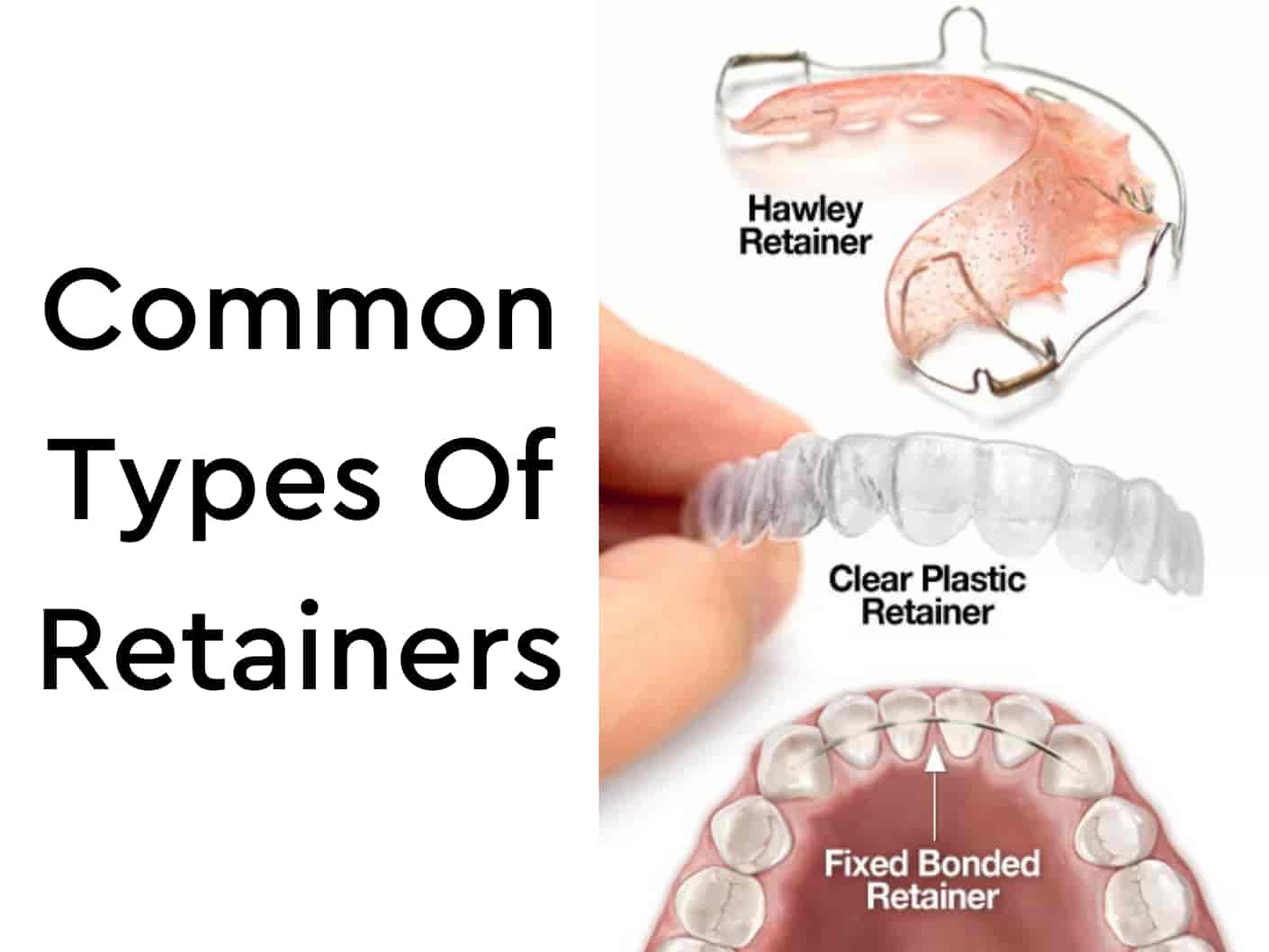Retainers are orthodontist devices that help keep your teeth in place after removing braces. After straightening your teeth using braces, it might take around four to six months for your teeth permanently stay in their new position.
Over that time, they may try to shift back into their original positions, which is why orthodontists recommend retainers. There are different types of retainers, and the orthodontist recommends the best type depending on why you need the braces and any dental issues you might have.
The two basic types of retainers are permanent and removable, but there are two types of removable to choose from.
Hawley Retainers
Also known as the wire retainers, they are removable retainers that consist of a thin metal wire and acrylic or plastic designed to fit along the inner side of your lower jaw or the roof of the mouth. The metal wire goes across the outer surface of the teeth to help maintain alignment.
Advantages
- The orthodontist can adjust the retainer to fit better or if your teeth need more realignment.
- They are repairable.
- They last longer than clear plastic retainers.
- Your teeth touch naturally, meaning it does not affect how you chew.
- You can remove them when eating, brushing, or flossing.
Disadvantages
- They are the most noticeable types of retainers.
- They affect your speech more than any other retainer.
- The wire on the outside of the teeth might irritate your cheeks and lips.
Clear Plastic Retainers
Also known as molded retainers, these are the other type of removable retainers that the orthodontist designs to fit the new position and alignment of your teeth perfectly. Orthodontists may also refer to them with their technical terms, vacuum-formed or thermoplastic retainers.
The orthodontist first has to take pictures, 3D images, and a mold of your teeth to make the perfect fit. They then heat a thin polyurethane or plastic and stick it down around the teeth mold.
Different brands make plastic retainers, and they use different plastic materials. Therefore, when you look up “Invisalign dentist near me,” consider researching the brand of retainers they use.
Advantages
- They are clear, which makes them invisible.
- You can take them out to brush or floss and when eating.
- They are more comfortable than the Hawley retainers.
- They do not affect your speech as much as Hawley retainers do.
Disadvantages
- It’s impossible to adjust them if you need realignment, so you have to get a new set.
- Compared to permanent retainers, they have an effect on your speech.
- It’s impossible to repair them once they crack or break.
- They might wrap if you expose it to heat.
- They prevent your teeth from naturally touching, affecting how you chew.
- They discolor over time, especially if you eat or drink foods and beverages, causing them to become visible.
- They could trap liquids and food particles against the teeth, resulting in cavities.
Some common disadvantages that removable retainers have are that you might misplace them or lose them, they may increase your saliva production, and they might encourage bacteria growth.
Also, since you don’t have them on all the time, it is common to experience relapse or your teeth going back to their original position.
Tip: Most people use free online image editors to improve their images. The following article will introduce you to Image editing tools and some of their unique features.
Permanent Retainers
Also known as fixed, bonded, or lingual wire retainers, permanent retainers are made using a braided wire curved to fit your teeth’ shape and new position. The orthodontist bonds or cements the wire to the inner side of your front teeth to ensure they do not move.
Orthodontists mainly use them on lower teeth, and only the orthodontist can remove them. The orthodontist mainly uses them when they think your teeth have high chances of relapse. They also use it in young children because it’s hard for them to follow instructions on using removable retainers.
Advantages
- No chances of relapse.
- Does not have a lot of instructions.
- They hardly affect your speech.
- You can’t lose, misplace, or damage them.
- They are not visible.
Disadvantages
- It makes it hard to maintain oral hygiene, mainly flossing. This could result in plaque and tartar buildup, which could eventually cause cavities, decay, or gum disease.
- The metal wire might irritate your tongue.
With permanent retainers, the dentist instructs you how to properly brush your teeth to maintain the highest level of hygiene.
Every retainer has its advantages and disadvantages. The orthodontist will advise you on which is the best depending on your needs and the current state of your teeth. However, you also have to consider personal preferences like cost, comfort, and visibility.
